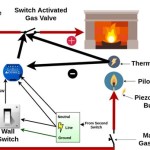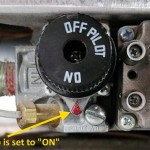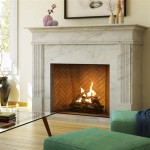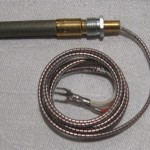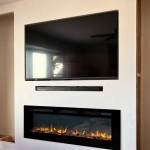How To Build An Outdoor Fireplace With Bricks
An outdoor fireplace is a captivating addition to any backyard, providing warmth, ambiance, and a focal point for social gatherings. Constructed with durable materials like bricks, an outdoor fireplace offers longevity and a classic aesthetic. This article details the steps involved in building a brick outdoor fireplace, encompassing planning, foundation construction, bricklaying, and chimney installation.
Planning and Preparation
Before commencing any physical construction, meticulous planning is paramount. This phase involves confirming local building codes and regulations, selecting an appropriate location, and establishing a design plan. Compliance with local ordinances is essential to avoid potential penalties or the need for subsequent modifications. Regulations often dictate setback distances from property lines, required permits, and environmental considerations.
The location of the fireplace should be carefully considered. Factors such as proximity to the house, prevailing wind direction, available space, and existing landscaping should be evaluated. A site that offers protection from strong winds will enhance the efficiency of the fireplace and improve user comfort. Adequate clearance from trees, fences, and other flammable structures is crucial for safety.
Developing a detailed design plan is the next critical step. This plan should specify the dimensions of the fireplace, the type of brick to be used, the style of the firebox, and the height and design of the chimney. Consider the overall aesthetic of the backyard and choose a design that complements the existing environment. Drawings or sketches can aid in visualizing the finished product and ensuring accurate construction.
The design should take into account the size of the firebox. A larger firebox can accommodate larger logs but may require more fuel to maintain a steady fire. The design must also incorporate proper ventilation to ensure adequate airflow for combustion and to prevent smoke from billowing back into the seating area. A well-designed chimney is essential for effective smoke removal.
Material calculation is a vital component of the planning phase. Estimates should encompass everything from the bricks and mortar to the concrete for the foundation and any supplementary materials required for the chimney construction. Accurate material quantities will streamline the construction process and minimize unexpected trips to the hardware store.
Tools and equipment assembly is another critical element of preparation. Essential tools include a shovel, level, brick trowel, mortar mixing trough, measuring tape, hammer, chisel, safety glasses, and work gloves. Power tools, such as a concrete mixer and a brick saw, can expedite the process, particularly for larger projects. Ensure all tools are in good working order before starting the project.
Foundation Construction
A stable and level foundation is the underpinning of any brick structure, particularly for an outdoor fireplace. The foundation must be capable of supporting the considerable weight of the bricks and mortar while preventing settling or cracking over time. The foundation should extend below the frost line to prevent movement caused by freezing and thawing cycles.
Excavation is the first step in foundation construction. The depth of the excavation will depend on the frost line depth in the specific geographic location. The excavated area should be wider and longer than the planned footprint of the fireplace to provide adequate support. The bottom of the excavation should be level and compacted to ensure a solid base.
Formwork construction is necessary to contain the concrete while it cures. Wooden forms are typically used, and they should be constructed to the exact dimensions specified in the design plan. The forms should be securely braced to prevent them from shifting or bowing under the weight of the wet concrete. The inside of the forms can be coated with a release agent to facilitate easy removal after the concrete has cured.
Concrete mixing and pouring is the next phase. Concrete can be mixed manually or with a concrete mixer. The consistency of the concrete should be such that it is workable but not too soupy. The concrete should be poured into the forms in layers, and each layer should be compacted to eliminate air pockets. A concrete vibrator can be used to achieve thorough compaction.
Leveling and smoothing the concrete surface is essential for a level foundation. A long, straight board can be used to screed the concrete, removing excess material and creating a smooth, even surface. A trowel can then be used to further refine the surface and eliminate any imperfections.
Curing the concrete is a critical step in ensuring its strength and durability. The concrete should be kept moist for several days to prevent it from drying out too quickly. This can be achieved by covering the concrete with plastic sheeting or burlap and periodically wetting it down. The forms can be removed after the concrete has cured for at least 24 hours, but it is best to wait for a week before beginning bricklaying.
Bricklaying and Firebox Construction
Bricklaying is the art of arranging bricks in a specific pattern, bonded together with mortar, to create a durable and aesthetically pleasing structure. Proper bricklaying techniques are essential for the structural integrity and visual appeal of the fireplace. The firebox, the core of the fireplace, requires special attention due to the high temperatures it must withstand.
Mortar mixing is fundamental to bricklaying. Mortar is a mixture of cement, sand, and water. The correct ratio of these ingredients is crucial for producing a mortar that is workable, durable, and resistant to cracking. Premixed mortar is also available, which simplifies the process and ensures consistent results.
Laying the first course of bricks is arguably the most important step in bricklaying. This course sets the foundation for all subsequent courses and must be perfectly level. A spirit level should be used to ensure that each brick is level both horizontally and vertically. Adjustments can be made by adding or removing mortar as needed.
Brick cutting is often necessary to achieve the desired dimensions and patterns. A brick saw is the most efficient tool for cutting bricks, but a hammer and chisel can also be used. Safety glasses should be worn when cutting bricks to protect the eyes from flying debris. Accurate measurements are essential to ensure proper fit.
Brick bonding patterns contribute to the aesthetic appeal and structural integrity of the fireplace. Common bonding patterns include running bond, stack bond, and English bond. The chosen bonding pattern should be consistent throughout the project. The mortar joints should be uniform in width and neatly finished.
Firebox construction requires the use of firebricks. Firebricks are specifically designed to withstand high temperatures without cracking or spalling. Firebricks are laid in a similar manner to regular bricks, but a specialized fireclay mortar is used to bond them together. The firebox should be designed to optimize combustion and heat retention.
Arch construction over the firebox opening adds structural support and visual interest. Arches can be constructed using a temporary wooden form called a centering. Bricks are laid over the centering, and the mortar is allowed to cure before the centering is removed. The arch should be carefully designed to distribute the weight of the bricks evenly.
Chimney Installation
The chimney is a critical component of an outdoor fireplace, responsible for venting smoke and combustion gases safely away from the seating area. A well-designed and properly installed chimney is essential for ensuring efficient performance and preventing health hazards. The chimney should extend high enough above the surrounding structures to create adequate draft.
Chimney design should adhere to local building codes and regulations. Codes often specify the minimum height of the chimney, the required flue size, and the materials that can be used. The flue is the internal passage through which smoke and gases escape. The flue size should be proportional to the size of the firebox.
Chimney materials can include brick, stone, or metal. Brick chimneys are the most common for outdoor fireplaces, as they complement the brick construction of the firebox. Metal chimney liners are often used to protect the brick from the corrosive effects of combustion gases. The liner should be made of stainless steel or another durable material.
Chimney construction involves laying bricks in a similar manner to the firebox. Mortar joints should be carefully filled and smoothed to prevent leaks. The chimney should be constructed with a slight taper to enhance its stability. A chimney cap is installed at the top of the chimney to prevent rain and debris from entering.
Flue liner installation is crucial for protecting the chimney from heat and corrosion. Flue liners come in various materials, including clay, metal, and concrete. The liner should be installed according to the manufacturer's instructions. Proper sealing of the flue liner joints is essential to prevent leaks.
Chimney flashing is installed where the chimney meets the roof of any adjacent structures. Flashing prevents water from seeping into the building and causing damage. The flashing should be made of a durable, weather-resistant material, such as aluminum or copper. The flashing should be properly sealed to the chimney and the roof.
Testing the fireplace and chimney is the final step in the construction process. A small fire should be built in the firebox to check the draft of the chimney. Smoke should rise freely out of the chimney without billowing back into the seating area. Any problems with the draft should be addressed before using the fireplace regularly.

How To Build An Outdoor Fireplace Today S Creative Life

Stonetutorials Living Stone Masonry

Small Outdoor Brick Fireplaces Related Post From Diy Fireplace Plans

How To Build A Brick Fireplace Diy Part 1 Of 5

Diy Building Outdoor Fireplace With Smoker And Grill Bbq
:max_bytes(150000):strip_icc()/outdoor-fire-pit-ideas-00ba790bf8f14670a9e78ecdad266497.jpg?strip=all)
31 Diy Fire Pit Ideas And Plans For Your Backyard

Diy Outdoor Fireplace Ideas

Diy Outdoor Fireplace Kit Fremont Makes Hardscaping And Easy

How To Build An Outdoor Fireplace Step By Guide Buildwithroman

45 Stunning Outdoor Fireplace Designs For Relaxing With Your Friends Freshouz Home Architecture Decor Plans Patio

